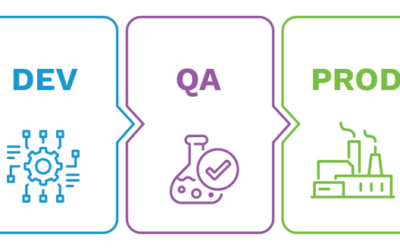The Remarkable Benefits of Process Automation
Optimizing and automating processes eliminates the costs above and saves time.
The Real Cost of Manual Processes
Our previous post explained the Kinetic Automation Maturity Model (KAMM), indicating how costs decline as business processes are transitioned from fully manual to fully automatic. We will extol the many valuable benefits of process automation. However, we first need to understand the tangible cost of a manual process to appreciate process automation holistically.
We started with a figure of $30 for a manual process, a number commonly used by industry analysts like Gartner and Forrester as well as online sources. But what exactly goes into that cost? And how are costs reduced or eliminated as processes become structured, managed, optimized and ultimately automated? Let’s take a closer look.
The Sources of Process Cost
Inefficient, manual processes are costly. According to Entreprenuer.com, an IDC study found that inefficiency costs companies anywhere from 20% to 30% of their revenue every year. That seems really high. But even if that figure is off by 2X, 3X or as much as 5X, the costs of process inefficiency are substantial.
There’s no question that manual processes impose costs. But what exactly makes process inefficiency so expensive? Here are 11 common elements of process costs:
- Direct time
This is usually one of the easier costs to measure and quantify. It’s the cost of the time and labor directly required to complete a manual process or fulfill a request. - Number of employees involved
Closely related to direct time, this is a broader measure of the labor cost of all employees who have to “touch” a process between its beginning and end. - Indirect time
Though more difficult to measure, this is potentially much more expensive than the direct cost of a manual process. This is the delay, the wait time and the lost productivity associated with the full duration of the process, from request through fulfillment. For example, if an employee’s laptop crashes and they request a new one, what is the cost of their lost productivity while waiting? If it’s a lawyer who can’t put in billable hours on a case or a technology consultant who can’t be working with clients, this cost can be quite significant. - Errors
Manual processes are error-prone. The costs of errors can show up in all sorts of ways, from the cost of rework (e.g., doing parts of the process over because they were wrong the first time), returns (e.g., if the wrong product was delivered) and mistakes (e.g., lost sales or worse yet, lost customers). - Inaccurate data
Manual processes are slower and less precise than automated tasks. This can cause data to be out of date or just plain wrong. At the least, this can lead to wasted time while decision makers double-check or seek to verify the numbers. At worst, it can lead to bad decision making. - Increased blame
As Milton Friedman famously said, “When everybody owns something, nobody owns it.” He was talking economics, but the same principle applies to processes. If every step, every task in a fulfillment process isn’t clearly assigned to – and the responsibility of – a specific individual, it’s easy for people to point fingers when something goes wrong. - Lack of visibility
Manual processes are opaque. There’s no visibility into macro data like the average time to complete a process or how often a specific type of request is made. Even specific actions like when a task was completed, who did it, or who (if anyone) approved it is often not clear either. That not only means a lack of data for decision making but also an increased risk of fraud by an outside vendor or even an employee. - Compliance risk
Related to but separate from that lack of visibility, manual processes are also more difficult to track and audit. In regulated industries and other situations, this can lead to financial penalties and fines being levied. - Siloed information
When completing a manual process or fulfilling a request involves multiple departments, each is often using its own applications. The lack of integration, and the visibility it provides, means one group can end up waiting on another, unaware of the status of certain tasks. It also increases the risk of mistakes. - Poor employee experience
When an employee has to wait a long time for a request to be fulfilled or it’s fulfilled incorrectly or worst of all, it “falls through the cracks” and doesn’t get fulfilled at all, it creates a bad experience. In addition to lost productivity, it can negatively impact engagement and retention, not to mention corporate image. Trust me; there are copious process-related horror stories on Glassdoor and Reddit. - Poor customer experience
As damaging as delays and mistakes can be to employee morale for internal requests, they are worse when they impact your customers. Whether the impact is indirect (the customer has to wait due to inefficient internal processes) or direct (wrong product, invoice errors or customer service frustrations), slow and error-prone manual processes can lead to lost sales, dissatisfied customers and reduced competitiveness.
Process Automation Benefits
Optimizing and automating processes eliminates the costs above and saves time. Not only are employees more productive because they are doing more value-added work rather than simple fulfillment tasks, but the increased speed and accuracy makes “customers,” whether internal or external, happier. Here are 12 more specific benefits of process automation.
- Increased productivity
With automated processes, employees spend less time working on manual fulfillment tasks or waiting (with attendant down time) for requests to be fulfilled. - Reduced errors
Automation improves accuracy, so rework is eliminated and less time is spent dealing with other negative outcomes from bad data. - Clear accountability
When processes are optimized and automated, there’s less human involvement required. But where humans are involved, it’s clear who is responsible for what. - Improved department collaboration
Having clear responsibility for each task reduces finger-pointing. And integrating systems used in different functions makes it easier for the people in those groups to work together as well. - More efficient resource allocation
When employees are freed from manual fulfillment tasks, they can devote more time to higher value-added activities. - Better customer experience
Internal and external customers alike benefit from consistently faster and more accurate fulfillment, leading to higher employee and customer satisfaction and retention. - Greater visibility: Automated processes simplify and improve data collection. Leadership has better access to high-level performance metrics and the ability to spot bottlenecks, while everyone involved can check the status of a fulfillment process at any time.
- More accurate, data-driven insights
With access to more data and greater confidence in its accuracy, leaders are able to make better-informed decisions, faster. - Elimination of “swivel chair integration”
Integrating systems and automating processes eliminates the need for employees to copy and paste information between systems or into spreadsheets, which saves time, reduces errors, and can potentially reduce software licensing costs. - Increased agility
Business processes aren’t “set and forget.” Any number of changes can mean even well-optimized processes need to be revised: new products, changes to an organization’s IT infrastructure, mergers and acquisitions, regulatory changes, and more. Automated processes are easier to iterate and modify, enabling organizations to be more responsive, flexible, and agile. - Improved compliance
Automated processes produce data at every step and are fully auditable, better enabling organizations to meet legal and regulatory requirements, as well as to prove their compliance. - Ability to scale
Process automation eliminates the time and capacity limitations of manual processes, enabling enterprises to much more easily scale up fulfillment as volume increases.
So…Why Hasn’t Every Task Been Automated?
Given the undeniable and significant costs of manual processes, as well as the compelling benefits of process automation, why do so many organizations still use so many manual processes? There are a number of reasons, and here are the four most common obstacles to process automation:
- Integration limitations
It’s challenging to integrate modern applications with the wide range of technologies often found in larger enterprises. This can include everything from legacy systems to external data sites, portals and mobile apps. The complications of integration can inhibit the implementation of process automation. - Exception management
Business processes often have numerous exception conditions which further complicate efforts to automate. Mapping these exceptions can turn a simple flow chart into something that looks more like a plate of spaghetti. - IT constraints
The typical enterprise now has hundreds of applications in its technology infrastructure. IT teams are stretched with everything from implementation and upgrades to support, security and strategy touching every corner of the business. They simply can’t execute on every single project request. - Inertia and complacency
A final reason may be the most common of all. When everyone is already beyond busy, it’s easy to take an “if it’s not broken, why fix it?” approach to process management. It’s especially true for cross-departmental processes, where the effort of collaboration across functions may not seem worthwhile; or to put it more colloquially, like “the juice isn’t worth the squeeze.”
The Solution
Desmond Tutu famously said that “there is only one way to eat an elephant: a bite at a time.” Given the challenges noted above, the same is true for process automation.
Rather than try to completely automate fully (or mostly) manual processes in a single large and painful step, make the transition incrementally. For guidance, check out The Kinetic Automation Maturity Model (KAMM) Overview blog.
The first step is simply adding structure and management to a process. Apply definitions and boundaries. Replace free-text fields on forms with pre-defined drop-down lists. Add automated task reminders. Even these small changes can cut manual process costs in half.
Then continue to iterate the automation. Add automatic routing of requests based on type. Connect systems to eliminate “swivel chair integration.” Optimize the process to get rid of unnecessary steps.
Keep in mind that process automation is implemented on two parallel tracks:
- changing human actions or behaviors
- making technology changes
It’s much easier on both fronts to make a series of small changes rather than one giant leap.
Consider implementing supporting technology like the Kinetic Platform that simplifies integration while empowering business users to build their own automated workflows, reducing the burden on IT.
Final Thoughts on Process Automation
Taking small steps that lead to quick wins can build momentum for change. This approach lets you transition processes from manual to automated in a series of steps, reducing disruption and increasing the odds of success. And as shown by the costs and benefits of process automation, the end result of the steps we’ve shared can have a huge organizational impact in terms of lower costs, higher productivity and increased overall customer satisfaction.



